Content creation has many variables, but video quality is indisputable. For those serious about streaming, looking into 4K camera options is the fastest way to improve and future-proof their stream.
While 4K technology seems like it’s brand new, it won’t take long before it’s the new standard. Finding a 4K camera with the right qualities keeps you at the top of your game, preserves your brand, and gives you a certain air of professionalism.
While there are plenty of cameras to sift through, let’s start with our picks for the best return on your investment and those wanting 4K streaming capabilities from a webcam profile.
Best Bang For Your Buck
Panasonic LUMIX G7
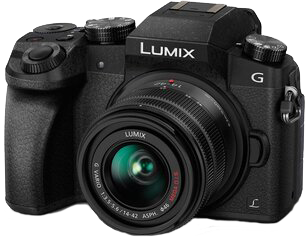
If you’re not ready to make a major investment in your camera but want to make sure you have all your bases covered, the Panasonic LUMIX G7 is one of the most affordable 4K options out there.
From a brand you know and trust, the camera features a sensor that actually prioritizes videography. It has everything you need for a strong upgrade to stream quality with no frilly features to overwhelm you.
Best 4K Webcam
Logitech Brio
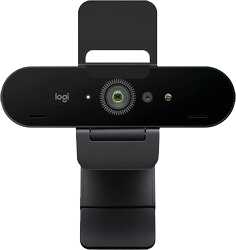
Not everyone needs a camera. If you’re one of those people, the Logitech Brio webcam may better serve you. You get 4K streaming capabilities but do not need to sacrifice any desk space.
The Brio is one of the most popular streaming webcams on the market. Not only does it make cable management and mounting easier, but it focuses on depth of field and autofocus features that benefit streaming shots.
Top 5 4K Cameras for Streaming
Upgrading to 4K is a big step, but you don’t need to dive in blind.
Here are 5 of the best 4K cameras we recommend for streaming:
1. Blackmagic Design Pocket Cinema Camera 4K
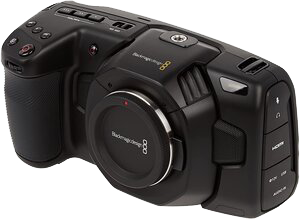
The Blackmagic Design Pocket Cinema Camera 4K offers everything you might need for 4K streaming. It’s not the best choice for anyone looking to swap lenses often, but it has plenty of built-in features and a high-quality standard you need to bring a professional touch to your stream.
While it doesn’t have a built-in IP encoder for live streaming, this is a quick and easy fix with a capture device. You can use any you feel comfortable with, but Blackmagic has a few that pair seamlessly with the camera.
The high frame rate works well for streaming, especially if you end up using the camera for any action shots, and you seldom see complaints about the video quality. It eats through batteries fast, but this is no problem for streamers with stationary shots.
| Still Image Sensor Resolution | 8.8 MP |
| Frames per Second (for 4K) | 60 fps (4K DCI); 75 fps (4K 2.4:1) |
| Sensor Type | 4/3 Full CMOS |
| Inputs | 3.5mm microphone; mini XLR (+ phantom power) |
| Outputs | 3.5mm headphone; HDMI; USB Type-C |
| More Specs & Reviews | Read more |
Pros
- Slimmer profile than competition
- Easy navigation
- Great picture quality
- XLR audio input
- Works well in multi-camera setups with other Blackmagic Design cameras
Cons
- No autofocus
- Consumes batteries fast
- 4/3 lenses less common
2. Logitech Brio 4K Webcam

The Logitech Brio is exactly what you expect from one of the leading software and peripheral brands worldwide. It’s great for anyone that wants to improve their video quality without taking up as much desk space (or their budget).
The Brio brings 4K capabilities to web camera slimness, and it focuses on some problem areas that more versatile cameras ignore. You still need decent lighting for it to really shine, but this webcam offers 3 view settings perfect for streaming.
You need a USB 3.0 port for 4K streaming to work, and you’ll need to really sit down and dig into the settings to uncover the camera’s true potential, but once you have it set up you don’t need to worry about anything.
| Still Image Sensor Resolution | 13 MP |
| Frames per Second (for 4K) | 30 FPS |
| Sensor Type | Infrared |
| Inputs | N/A |
| Outputs | USB A to USB C |
| More Specs & Reviews | Read more |
Pros
- Different depths of field
- Tripod mount capable (not included)
- Intuitive software
- Autofocus works well with faces
Cons
- Monitor clip may not work for all monitors
- Unforgiving in poor lighting
- Requires lots of tweaking to actually get quality down
3.Panasonic X1500 4K Professional Camcorder
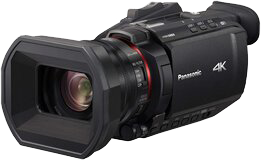
The Panasonic X1500 doesn’t look like the other cameras on this list, and it shouldn’t. This camcorder allows for still imagery, but it has a unique focus on video that the other cameras can’t touch.
This means you get a better tool for shooting moving shots, whether you’re just capturing your indomitable focus or putting some serious action on the screen. While this is a full-service camcorder, it has a nice ergonomic shape and its light weight works well if you need to carry it.
It also has a better battery life, so you aren’t tethered to an outlet for the entirety of your stream. This is one of the most accessible camcorder options for 4K streaming, and you unlock the benefits of technology dedicated to video. This includes a higher frame rate while streaming 4K, beautiful zoom, and great color recognition that improves tracking capabilities and shake correction.
| Still Image Sensor Resolution | 8.29 MP |
| Frames per Second (for 4K) | 30 fps; 60 fps |
| Sensor Type | 1/2.5” MOS |
| Inputs | 3.5 mm; USB B |
| Outputs | HDMI; 2.4mm Sub-mini |
| More Specs & Reviews | Read more |
Pros
- Ergonomic shape and lightweight works better for moving shots
- Better battery life
- Accessible camcorder compared to competition
- High fps for 4K
Cons
- Not a “grab and go” camera
- Requires extensive manual setup
- Small chip sensor performs poorly in low light
4. Sony A7 III Full Frame Mirrorless Camera
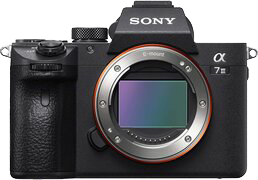
If you’re looking for a great all-around camera, you can’t go wrong with Sony’s A7 III. This mirrorless camera utilizes a full frame CMOS sensor, and it works well with both still and active shots.
If you want something that can give you the best of both worlds, the resolution on the A7 III is high in both areas. It may have low frame rates for 4K streaming, but this should be fine for most applications.
The A7 III has a quiet, quick, and effective autofocus, and its back-lit sensor prioritizes light gathering for better performance in low light conditions.
| Still Image Sensor Resolution | 24.2MP |
| Frames per Second (for 4K) | 24 fps; 25 fps; 30 fps |
| Sensor Type | Full Frame CMOS |
| Inputs | 3.5 mm; USB C; USB B Control |
| Outputs | 3.5 mm; HDMI D; USB C |
| More Specs & Reviews | Read more |
Pros
- Higher still image resolution than other options (great all-around camera)
- Quick and effective autofocus
- Silent function
- Back-illuminated sensor for greater light gathering
- Faster processing speeds
Cons
- Lower frame rate for 4K
- Front-heavy design with certain lenses
- Difficult to navigate settings at the start
5. Panasonic LUMIX G7 4K Digital Camera

The LUMIX G7 from Panasonic is another 4K option that gives you the best of both worlds, but it’s less cumbersome from a streaming perspective. It has a compact design that doesn’t change much with lenses, and you aren’t fumbling around with the control layout.
While 16 MP may not seem like much, this actually paves the way for higher camera performance. It may not land your photographs in National Geographic, but it works well for a 4K streaming camera that moonlights as point-and-shoot.
The autofocus works fast and doesn’t muddy up your sound, and it also works well in dim light. The intelligent autofocus preserves color and size in its endeavor, calculates the distance to your face, then adjusts silently without interrupting your stream. This camera works well for anyone looking for an affordable option that checks all their boxes.
| Still Image Sensor Resolution | 16 MP |
| Frames per Second (for 4K) | 24 fps; 30 fps |
| Sensor Type | 4/3 MOS |
| Inputs | 3.5 mm jack; 2.4mm remote port |
| Outputs | HDMI D; HDMI B |
| More Specs & Reviews | Read more |
Pros
- Compact design and comfortable in hand
- Smart control layout design
- Fast autofocus
- Works well in low light (including autofocus)
Cons
- Shorter battery life
- Wi-Fi app is complex and cumbersome
Is 4K Live Streaming Possible?
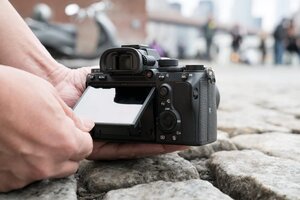 Live streaming in 4K is possible, but it’s not a walk in the park. There are plenty of compatibility issues to keep in mind when deciding if you want to stream at such a high resolution.
Live streaming in 4K is possible, but it’s not a walk in the park. There are plenty of compatibility issues to keep in mind when deciding if you want to stream at such a high resolution.
To start, you need upload speeds of 8 to 9 Mbps to even think about streaming in 4K. Anything less than this is going to lag, and you’ll drop your frame rate. This poses disaster for anyone aiming to improve their video quality.
You can check your upload speed before buying a 4K camera for streaming using speedtest.net or just searching “internet speed” on Google; just make sure you do this on the device you plan to stream from.
While most streaming software programs support 4K, you should make sure your computer is ready to take on the stress of processing the video. In certain cases, 4K streaming is too taxing for the computer or it generates too much heat.
The other issue with 4K streaming is how well received it is by your viewers. If they have poor internet connection, your stream ends up choppy, regardless of how well your bases are covered.
This doesn’t mean you should avoid 4K altogether, though. Now is the perfect time to future-proof your setup. While 4K technology isn’t quite popular, it’s the next standard for streaming and it will soon be the baseline for video quality.
What to Consider When Buying a 4K Live Streaming Camera
Like any other camera, you want something with great video quality that pairs well with your devices.
You should also consider some features unique to 4K cameras, such as whether they have an automatic power off function or a tendency to overheat.
Video Quality & Frame Rate
While resolution plays a part in determining video quality, you still find variables in 4K cameras that affect video quality. Higher video resolution lines up with more image detail, but you need to pay attention to other specs such as:
- Frame rate
- Still image resolution (# MP)
- Low light capabilities
- Autofocus
For 4K streaming, you want a frame rat of at least 30 frames per second. This should be fine for streaming, especially if your stream follows static content (i.e. interviews or capturing your profile while gaming).
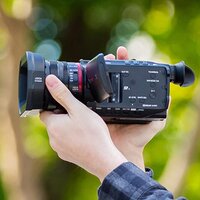 If you’re planning on capturing any action shots while streaming, such as sports, you need to find a 4K camera with 60 fps or higher to honor those dynamic shots.
If you’re planning on capturing any action shots while streaming, such as sports, you need to find a 4K camera with 60 fps or higher to honor those dynamic shots.
The image sensor resolution also hints at video quality, but don’t expect as much from a video camera. They have lower megapixels than still-imagery cameras, but this opens the door for better processing capabilities.
Many of these camera sensors perform better in low light capabilities, and they’ll prioritize a quiet, effective autofocus before photography-minded cameras. This helps quite a bit when recording inside where low-light is often a problem and your microphone picks up the smallest sounds.
Auto Power Off Option
Many cameras have built-in auto power off features that keep you from burning through the battery and storage space. The camera doesn’t automatically assume you want this off when you have it set up for streaming, and you might end up getting kicked out of your stream 30 minutes in.
Luckily, most cameras allow you to turn this option off. You may need to dig around in your battery or energy saver settings to find it.
You want to learn about these options before making your purchase. Some cameras won’t allow you to turn it off at all, and you’re stuck extending it to the longest possible time and fiddling with your camera every time it gets close to shutting off.
Streaming Compatibility
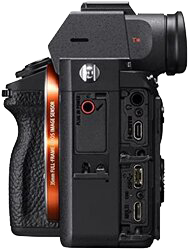 Compatibility depends on what ports you need to connect and whether the camera software plays nice with your streaming software.
Compatibility depends on what ports you need to connect and whether the camera software plays nice with your streaming software.
Most mirrorless and DSLR cameras offer various output options, but your best bet is HDMI or SDI. The latter is faster and has longer cables, but you’re more likely to have a camera with HDMI connectivity.
In most cases, you need a USB video capture device to connect to your computer and relay the video (most computers only have HDMI out ports). These devices exist at several price points, and they can affect your video quality and features.
Your camera should also work with streaming software like OBS Studio or Streamlabs to broadcast your stream. In most cases, the software picks up on your camera with no problem, but some cameras have more problems or need updates before they work properly.
Overheating
 One of the major issues you run into with higher quality cameras is overheating. Just like computers, the higher performance is the more heat you expect from the device.
One of the major issues you run into with higher quality cameras is overheating. Just like computers, the higher performance is the more heat you expect from the device.
Pay close attention when you look at any reviews for these cameras. They may work fine for general videography, but spending hours powered on during your stream may not work well with poor heat-management systems.
This may not automatically disqualify a camera, but it’s something to be aware of so you can prevent damage.
Final Thoughts
Like any major purchase, upgrading to a 4K camera for streaming is something you should research beforehand. Make sure you’re ready to make that jump and don’t worry if you want to wait a bit for the technology to catch on.
If you’re ready to take the plunge and still unsure about which camera is best, we recommend the Sony A7 III for most situations. The camera works well in more settings and has one of the most intuitive no-frills designs that let it settle into your streaming setup perfectly.
WINNER




